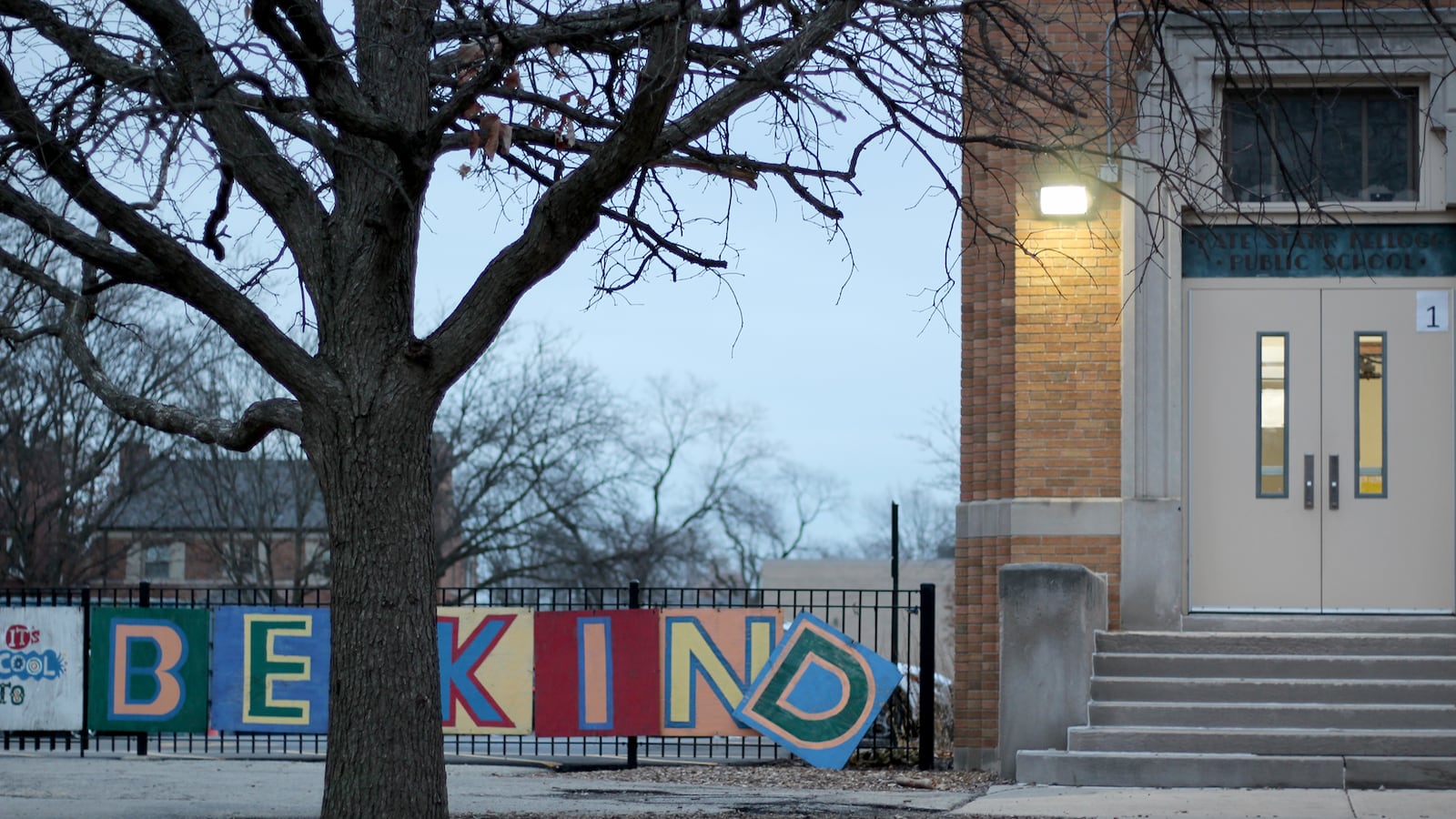Sign up for Chalkbeat Chicago’s free daily newsletter to keep up with the latest education news.
Chloe Athanasiou was rippling with nervous energy. It was Oct. 11 and they — and 28,000 of their eighth grade peers — were about to take Chicago Public Schools’ High School Admissions Test, or HSAT.
“Everybody’s so nervous. Either everybody’s really quiet or screaming their heads off,” Chloe said. “I was one of the people who was screaming their heads off to try to feel better. It actually worked, strangely.”
The test would be a crucial factor in determining the next stage in their lives: where they will go to high school.
In Chicago, every eighth grade student is guaranteed a spot at their local neighborhood school, but according to data from previous years, about 70% of high schoolers attend schools outside their neighborhood.
What was once an effort to desegregate Chicago Public Schools has turned into a fiercely competitive process to get a seat at top-performing, well-resourced high schools. Admissions decisions are still based on a “tier system,” which assigns every student’s address in the city a “tier” based on the socioeconomics and educational attainment of people living in the census tract and admits a mix of students living in different tiers.
Applicants spend months attending open houses, researching schools, and ranking them in order of preference. Next, they take the HSAT. When their scores come back a few weeks later, students have a chance to re-rank their school choices — a new twist added this year.
Then, everybody waits — until May, when admissions offers are made.
The whole process, as eighth grader Elias Gray put it, causes “mostly anxiety and fear.”
CPS made some changes to this year’s test meant to help alleviate stress, said Sara McPhee, executive director of the CPS Office of Access & Enrollment. After feedback from families, for example, the HSAT was shortened to one hour instead of two-and-a-half and reduced from four sections to two.
But the anxiety is deep-seated because what’s at stake, these students say, are their futures.
Chalkbeat followed four eighth graders from different parts of the city and different types of schools through this year’s enrollment process – which came with some changes and a test day glitch. Here’s what it’s like to go through Chicago’s high school enrollment process.
High school is one key to unlocking dreams
Many students begin thinking about where to apply to high school well before eighth grade.
That’s partly because students’ grades in seventh grade factor into admission at the city’s selective enrollment schools. The other half of a student’s overall score is based on their HSAT results.
Students try to prepare however they can, including by shelling out for private tutoring – even though CPS warns that it has seen no correlation between test preparation and acceptance rates.
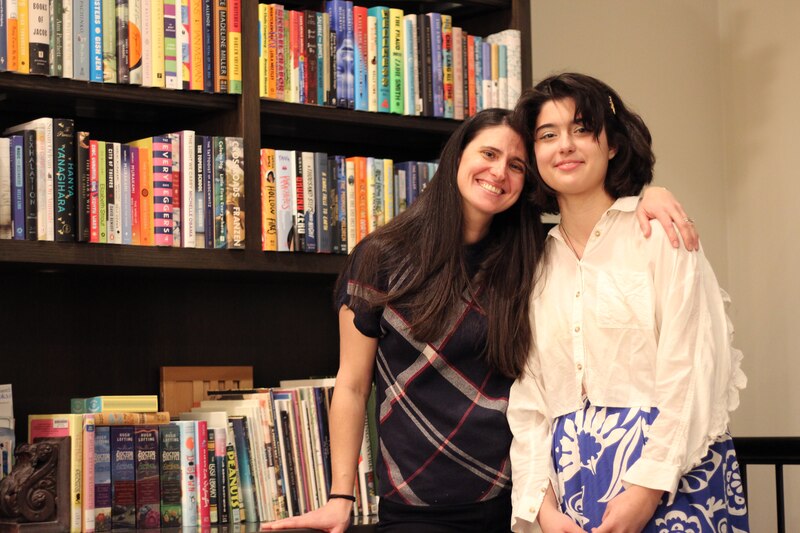
Chloe Athanasiou wants to be a therapist when they grow up. In their own personal experiences with therapists, Chloe has seen many ways that mental health treatment for young people, especially queer youth, needs to be improved.
That is why Chloe hopes to attend a high school that offers an Advanced Placement Psychology course, something available at the city’s top selective enrollment high schools.
In order to make that hope a reality, Chloe began preparing for the admissions process in the spring, but it’s been in the back of their mind for years.
“You start thinking about it in sixth grade a lot, because you’re like, ‘Okay, next year is the year that I have to get all As,’” said Chloe. “And then in seventh grade, you’re like, ‘Okay, [now] I have to get all As. So how am I going to do that? How am I gonna accomplish that with the amount of homework and the different really big projects?’”
To prepare, Chloe did test prep courses, took practice tests, and participated in a Test Anxiety group offered through their school. Despite all of the preparation, said Chloe, the anxiety and stress remained.
“Logically, I know that really all that’s at stake is the next four years of my life. But mentally, it turns into this gigantic thing,” said Chloe. “It turns into a bigger thing than it actually is because of peer pressure and parent [pressure] just evoking a lot of anxiety.”
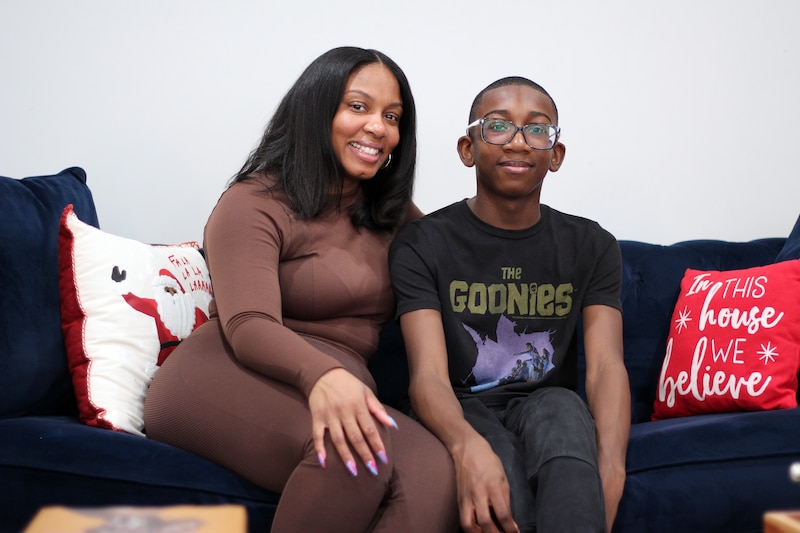
Art helped Daniel Watson ease some of the pressure of going through the admissions process, but his interests in science and technology are driving his and his family’s choices about high school.
His mother, Nicole Watson, began looking into Career and Technical Education (CTE) programs at local high schools as a strategy to counter the high competition of selective enrollment high schools.
“It’s just another way of potentially having my child at a high-performing school,” she said. “I’m looking at all of the options because I think we all know that selective enrollment schools only have so many seats.”
For admission to high school in the 2022-23 school year, 6,239 students ranked Lane Tech, which has about 1,200 seats for incoming freshmen, as their top choice school.
Whitney Young and Jones high schools were the second and third most frequently ranked as student’s top choices, with over 3,400 students ranking them as their first choices.
Nicole Watson wants to give her son more options, but as a social worker she worries about the kids who don’t have “parents or community that’s invested in their education and don’t have access to programming that can make up and fill in those gaps.”
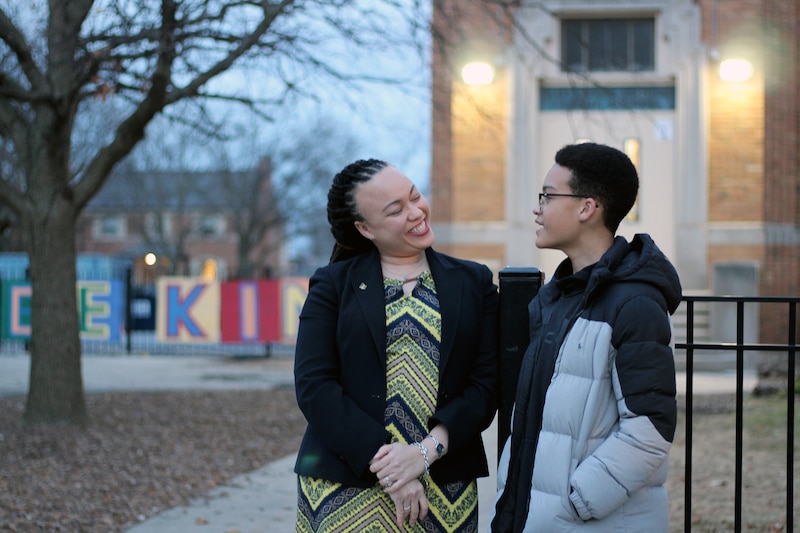
Eighth grader Elias Gray let out a long sigh and shook his head before describing his feelings about the impending HSAT last month.
“This test basically decides the next course of your life in education,” he said.
His mother, Shanya Gray, admitted to feeling just as nervous. A few days before the test, she took the day off from work just to help her son study and try to ease the anxiety for both of them.
“This whole thing is very new to me, because I didn’t grow up in the US. I grew up in the Caribbean,” said Shanya Gray. “So I’m learning as I go along, learning about this process here in the U.S., and there are, even now, some things I wish I knew a year ago.”
She was surprised that there was not more preparation for the test built into the CPS curriculum. She ended up paying for tutoring and a test prep workshop to help her son prepare, but she’s keenly aware of the fact that such preparation isn’t available to everyone.
Elias says he wishes there was more preparation and support from CPS and within the classroom in the form of practice tests and lesson plans specifically targeting the HSAT.
While Elias is hoping to attend a school that can best support his interests in engineering, his goal is simply to attend “an actually good school.”
This whole process, he says, forces students to look forward, even beyond high school, and consider how the choices they make now will have a significant impact on where they go to college and their entire future.
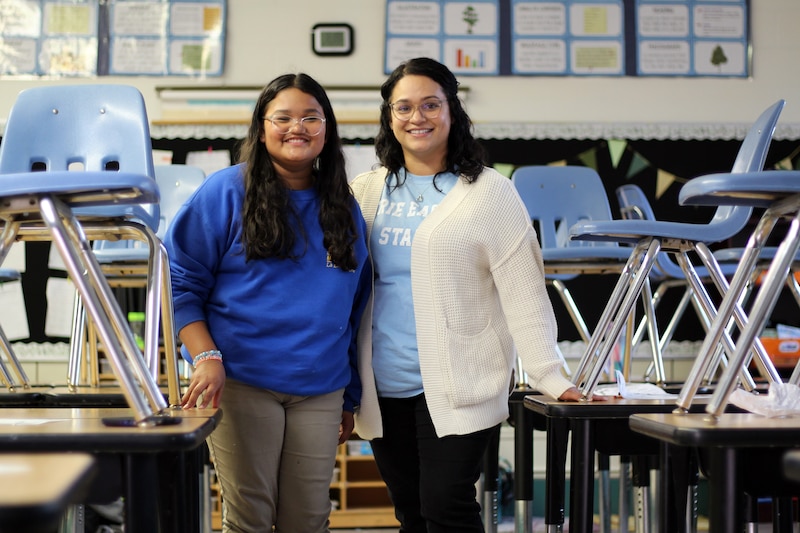
Selah Zayas looked on as her grandmother evaluated her little brother’s vital signs this summer. He had started having difficulty breathing and Selah’s grandmother is a nurse. Watching her jump into action, she saw how important that kind of knowledge can be, and she wants to help people in the same way some day.
Following in the family’s footsteps is kind of a thing in the Zayas family. All of Selah’s siblings attend the same public charter school where her mother teaches fifth grade, and Selah’s sights for high school are set on Lane Tech, which her mother attended.
After her older brother went through the high school enrollment process last year, Selah went in with eyes wide open. Plus, her school has a High School Placement Manager who prepares students for high school and the enrollment process.
Even so, Selah and her mother had some concerns.
Selah learned some of the foundational math skills tested on the HSAT when schools were fumbling with virtual learning during the pandemic. Studies show that students have had significant and lingering learning loss due to the pandemic, and as a teacher, Selah’s mom, Andrea Zayas, has seen some of these impacts first-hand.
This, she said, is part of what makes the enrollment process inequitable.
“I feel like this system is unfair,” she said. “It’s one test, one day. It’s an hour of their life to determine the high school that will lead to their college.”
In addition, Selah learned math at her dual-language school entirely in Spanish, and while CPS offers the opportunity to take the HSAT in Spanish, Selah feels she is stronger at reading in English. So she opted to take the test in English.
These concerns compounded the pressure, said Selah, because the stakes are so high.
It’s about “who I’m trusting to take the next four years of my life at school [and who] will help guide me,” she said.

Glitch adds to test day stress
On HSAT test day, the test that 20,000 eighth graders had spent months worrying about malfunctioned. Some students had been able to complete the test before the system crashed, others had completed half, some had never even been able to log in.
Meanwhile, at schools across the city, cell phones were buzzing as eighth graders texted friends about what was going on – discussing questions they remembered from the test, telling friends what to expect, and maybe freaking out a little bit.
CPS decided to reschedule the test, allowing those who finished the chance to keep their scores from this session or retake it at a later date.
Before scheduling a retest date, CPS worked with the vendor to make sure the test wouldn’t crash again. The new testing dates were finally set for Oct. 24 and 25.
Chloe
“I thought the stress would be totally gone, the stress of actually counting down the days until the test,” said Chloe Athanasiou the day after the initial test. “It’s not gone, it’s still there, because nobody knows what’s going on.”
Although Chloe was able to finish the test before the system crashed, their mother was incredibly frustrated by the technical issue.
“It really feels like a nightmare. The kids who are in tier four and have supportive parents and have resources, their parents are going to be able to navigate this in one way or another,” said Katherine Athanasiou.
Families with means, she said, might leave CPS altogether, “and then it’s just inequity upon inequity upon inequity.”
Daniel
Daniel completed the reading section on Oct. 11 and finished the test “with one minute to spare” when he retook it on the 25th. Knowing he had cut it so close made it more stressful as he awaited his scores
He had more anxiety leading up to the retake than he’d had for the initial test, he said, because there was less information available about when the test would be rescheduled. So he didn’t know how to schedule his studying time.
Elias
When Elias Gray sat down on Oct. 11 to take the test, he said all “the questions were in Spanish, and there were numbers all over the screen.”
After hearing the district would cancel and reschedule the exam, Elias felt “shock and relief at the same time.”
No one at his school was able to finish the test, he said. The principal shut down the test once malfunctions started. Knowing that kids at other schools were able to finish the test, Elias felt that the whole testing situation this year was compromised.
“That was unfair because kids at our school are friends with kids at other schools and they might use the answers there to try to [do better] on the test,” he said.
Selah
At Selah’s charter school, students were able to complete the reading section, but when they came back from break, the test was no longer working.
The whole situation had her feeling “a little bit salty,” she said.
For her, there had been more surprises than just the technical difficulties. While she had signed up to take the test in English, she found out on test day that students taking the test in Spanish were allowed to use a dictionary.
Knowing that, she said, might have changed her mind about taking the test in Spanish.
In addition, Selah was particularly put off by the timer that pops up in the corner of the screen as a warning that time was almost up.
“It was very stressful to have to keep seeing that,” she said. “I kept checking in, seeing how much time I have left.”
In the end though, Selah was mostly relieved to have more time to study and go into the test with a little more knowledge about what it would look like.
After scores come back, reality sets in
After HSAT scores were released just before the Thanksgiving holiday, families had a week to re-rank their school choices if they wanted to. McPhee said people are encouraged to rank by their preference, not by where they think they have the best chance of getting in.
Many seats go to students who have ranked a school second or third, she said. “The seats aren’t gone because we filled them up with the kids who put them first.”
“If school A is your dream, always put your dream at the top of the list.”
But McPhee, a mother of two CPS students herself, hopes families will consider their neighborhood schools and realize that there are more than just a few good options for their soon-to-be high school students.
Chloe
After watching Chloe waiting for their scores and seeing the stress this process has caused, Katherine Athanasiou can only think of two words to describe the process: “developmentally inappropriate.”
“You think these kids can handle so much,” she said. “Now you turn around and you’re like … ‘they are just brand-new teenagers.’”
Despite Chloe’s high scores, the Athanasious have begun an application process for a local private school just to keep their options open. Both were disappointed by the way CPS handled the system malfunction in October.
“I really believe in public education, and I’m still hopeful that it will work out – we’ll get into either the top choice or the second choice,” said Katherine Athanasiou. “But I also want to think about a place where the application process sees a child for not just test scores and grades but for all of the things that make the child who they are.”
Chloe feels pretty good about their chances at one of their top choices and excited that their friends received similar scores so they might attend the same selective enrollment school together.
Chloe switched schools in the middle of elementary school and it made a significant difference in their mental health and happiness.
“It really makes you see that school environments can be really different,” said Chloe. “You have to find the one that’s right for you and that’s not so easy to do.”
Daniel
Daniel’s test scores – in the 90th percentile – were almost exactly what his mother expected. She feels that gives him a good chance at getting into some of the selective enrollment schools on his list.
They evaluated last year’s cutoff scores for each school and decided to re-rank his top three schools, believing he had the best chance to get into Brooks or Lindblom – both selective enrollment schools on the South Side.
While they wait for offers to be made in the spring, she plans to help her son prepare for the Algebra Exit Exam. If he passes, he’ll be able to take geometry as a freshman.
But Daniel’s mom also hopes for broader improvements for all public schools.
“The fact that there are selective enrollment schools shows us CPS knows how to create high-performing schools,” she said. “There needs to be some more equity, so that we have high-performing neighborhood schools.”
Elias
While waiting for his scores to come in, Elias went to a second open house at Gwendolyn Brooks High School, a selective enrollment school in the Pullman neighborhood. The first visit was with his class earlier in the year. This time he was impressed, and it prompted him to re-rank his top school choices – his number one is now Brooks.
Now he’s nervous again. He did well on the test, but the few Bs he got in seventh grade brought his overall score to only a little bit above last year’s cutoff score for Brooks.
He’s trying not to think about what-ifs. Instead he’s reflecting on the process so far and thinking about where he can improve. He’s already thinking about how his experience with the high school enrollment process might prepare him for four years down the line when he’s applying to college.
Selah
When Selah’s scores came in at slightly above average, she was crushed. She had expected to do better.
Her dreams of attending one of the top selective enrollment schools in the city suddenly felt out of reach and she decided to readjust her rankings during the re-ranking period. She began to think her best option might be the charter school her brother attends where sibling preference guarantees her a seat.
Her mother, on the other hand, was baffled. The scores, she said, were inconsistent with her daughter’s grades and how she performed on other standardized tests throughout the year. It made her rethink everything. Is the school not adequately preparing her children? Was there a problem with the test? Did she miss something?
This isn’t the first admissions rodeo for Andrea Zayas and it likely won’t be the last. Her eldest son went through the process last year and did not get an offer at his top choice school.
“That was a disappointment for him and it wasn’t just one day; that disappointment lingers, you know?” she said. “I really feel like it impacts how they see themselves.”
Zayas has two younger children as well – a second grader and a sixth grader – and after seeing the ways this process has impacted her two older children, she isn’t sure if it’s worth it to put her youngest two children through it too.
Her focus now is making sure her daughter understands that “a person is not one thing.”
“A person is many things all at once and there are different strengths” she said. “What is that famous quote? If you judge a fish by its ability to climb a tree it will spend its whole life believing it’s stupid.”

